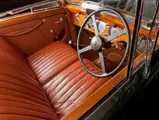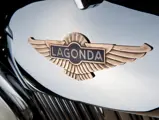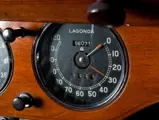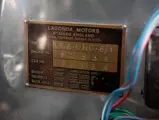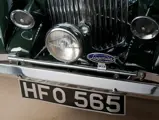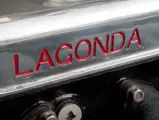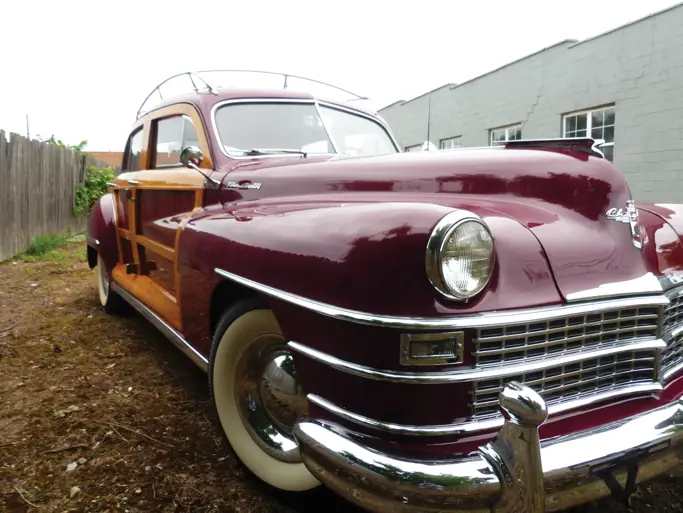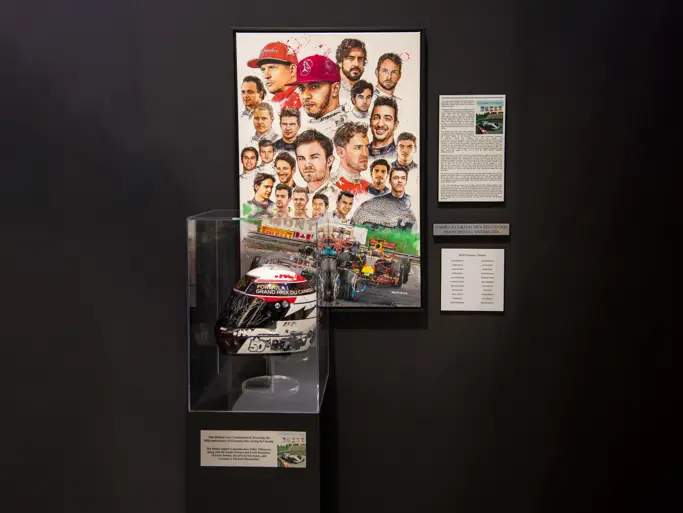Monterey 2011
1938 Lagonda LG6 Drophead Coupe
{{lr.item.text}}
$178,750 USD | Sold
 | Monterey, California
| Monterey, California
{{internetCurrentBid}}
{{internetTimeLeft}}

140 bhp, 4,453 cc inline six-cylinder engine, four-speed manual transmission, two SU carburetors, torsion bar independent front suspension, live rear axle with semi-elliptic leaf springs, and four-wheel hydraulic drum brakes. Wheelbase: 127.5"
- Iconic British sports touring car
- W.O. Bentley engineering with beautiful and rare drophead coupe body
Wilbur Gunn formed the Lagonda Motor Cycle Co., Ltd. in 1904 and added tri-cars to his product line. At first these had single-cylinder powerplants, but twins were soon offered. Gunn and his partner Alfred Cranmer made nearly all the components in-house. By 1908, the motorcycles and tri-cars had been dropped, and the Lagonda became a four-wheeled car with a V-twin engine.
In 1913, noting the success of Henry Ford’s Model T, Gunn and Cranmer came out with a less expensive car, the 11.1 (named for its rated horsepower) with an early form of unitary construction. In 1925, Lagonda re-entered the quality car market with the 14/60, which had conventional ladder chassis frames and coachbuilt bodies. The following year came a six-cylinder car, the 16/65, usually built as sedans or limousines. A “semi-sports” model of the four-cylinder car with a light tourer body led to the “Speed” model of 1928, which in turn led to racing teams entered in the Le Mans and Tourist Trophy races.
In 1933, Lagonda began using Meadows engines, a 4.5-liter unit that proved no heavier than Lagonda’s own three-liter but produced 50 percent more power. This new M45 model became quite popular, as it offered the performance of a Bentley at a lower price. A Rapide version on a shorter chassis was faster still. A pair of cars competed at Le Mans in 1935, one of them winning outright, besting Bugattis and Alfa Romeos.
But Lagonda, Ltd., as the company became, fell on hard times by 1935. The company was in receivership when a young lawyer, Alan Good, came to the rescue with a generous offer. With Good came plenty, in the persona of W.O. Bentley.
In 1931, Walter Owen Bentley’s bankrupt company had been acquired by Rolls-Royce, Ltd. Bentley was kept on as a customer relations and testing advisor, but the relationship with his new bosses was not a good one. Good, knowing of Bentley’s talent and his unhappiness, recruited the older man for Lagonda, where his experience and acumen were soon put to work on new designs.
Bentley’s objective was to take the Lagonda upscale while making technical improvements in the process. Starting with the M45, Bentley added twin Scintilla Vertex magnetos and synchromesh on the higher speeds in the gearbox and improved the chassis lubrication. Further improvements to a new LG45, introduced in 1934, included a cross-flow intake manifold and a lighter flywheel.
The new LG6, announced in October 1936, featured torsion bar independent front suspension, hydraulic brakes and a hypoid rear axle. The engine now gave 140 bhp. Joining the LG6 at the Olympia Motor Show debut was a new V-12 engine, wholly designed by Bentley. There were two wheelbases for the LG6 and three for the V-12, although the chassis were similar, and factory bodies were offered on either chassis. Production didn’t begin until October 1937 but continued until the outbreak of war in 1940. Interestingly, the 12 outsold the six, 189 to 85.
The Lagonda LG6 drophead coupe presented here, chassis number 12334, was delivered to its first owner on August 24, 1938, via London dealers University Motors. It was originally registered with the Middlesex number MG6128, from a series issued to the dealers, who not coincidentally also handled MG cars. It became known to the Lagonda Club as early as 1957, when it was acquired by club member P.J.C. Endorry. The car was later in the collection of Lagonda enthusiast D.S. Vernon in Chichester and was shipped to the United States, where it was owned by Desmond Fitzgerald of Connecticut and Terence Gooding of Santa Fe, New Mexico. In the intervening years, many of the car’s owners have been Lagonda Club members. Its recent provenance includes the Frank Ricciardelli Collection. Presented in British Racing Green, it has a beige leather interior with matching “double duck” convertible top. The car wears an older restoration and shows noticeable signs of aging.
According to the Lagonda Club records, just 63 short-wheelbase production Lagonda LG6s were built between 1937 and 1940. Just 50 are known by the Club to survive. About half the total production is believed to have been dropheads, making this car an extremely rare example of these quintessential English sports tourers. The fabulously elegant open coachwork was built by Lagonda and designed by their styling genius, Frank Feeley, who produced such breathtaking bodies that very few customers sought the services of outside coachbuilders. This LG6 drophead coupe amply demonstrates the reasons why.




